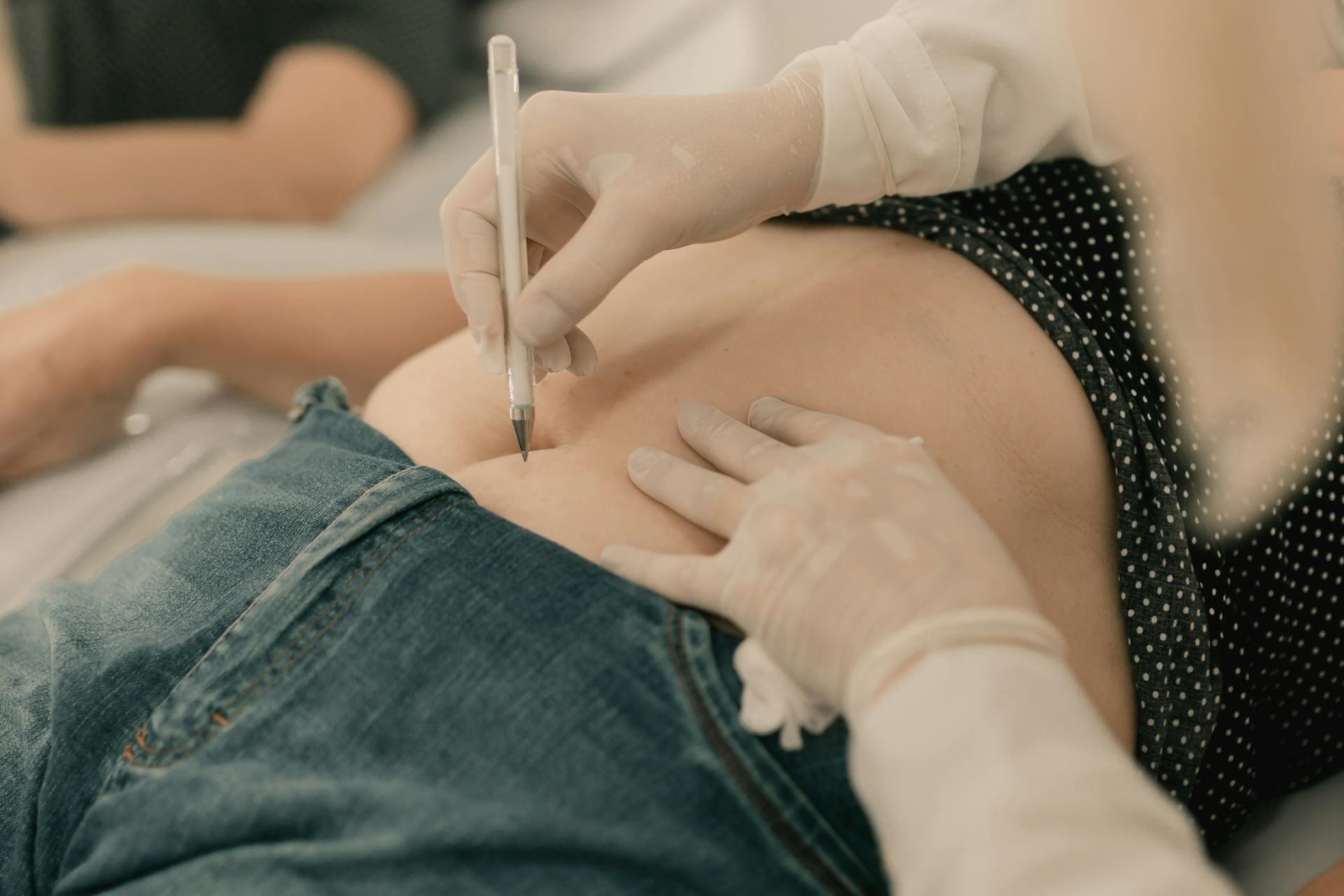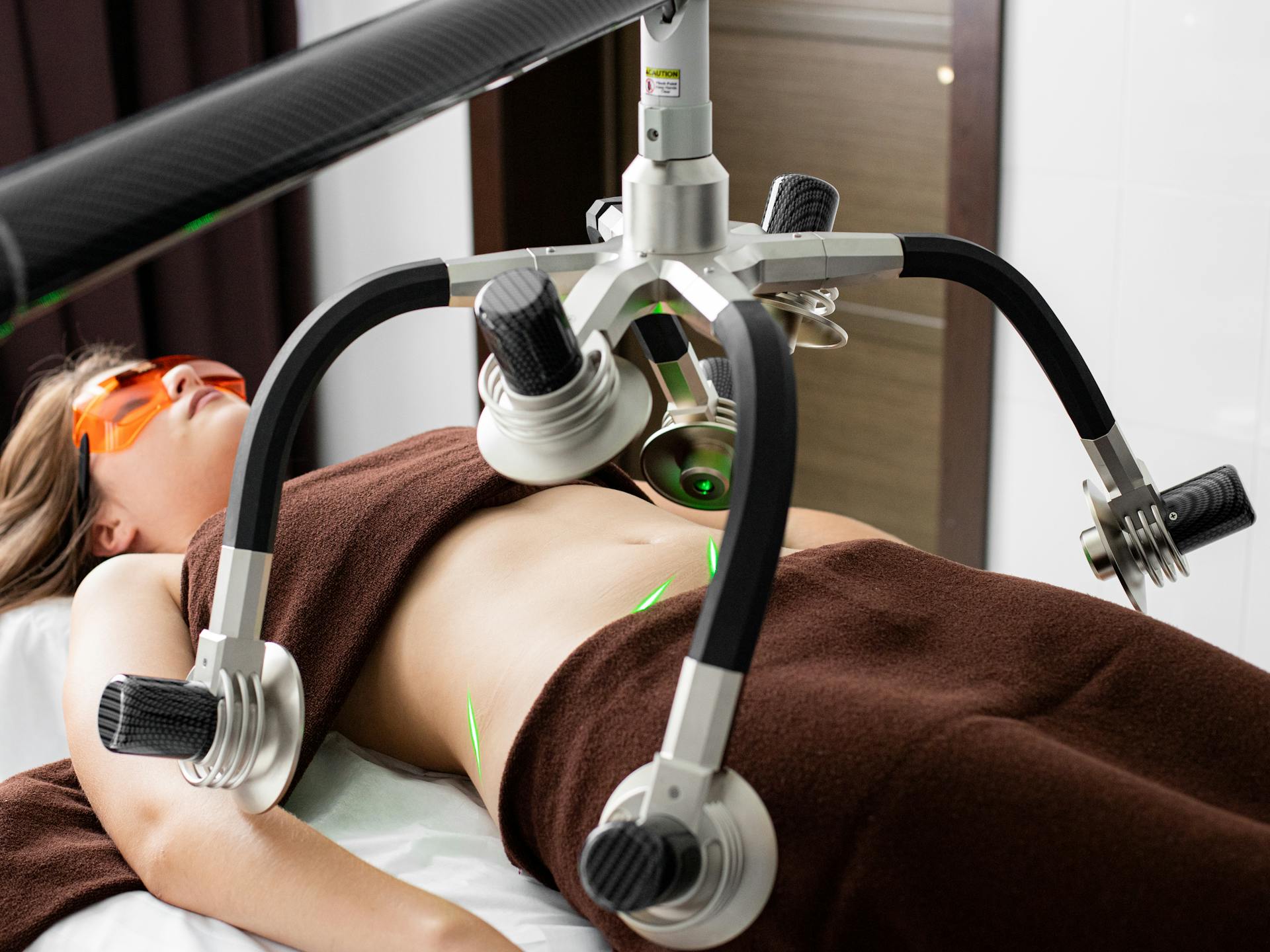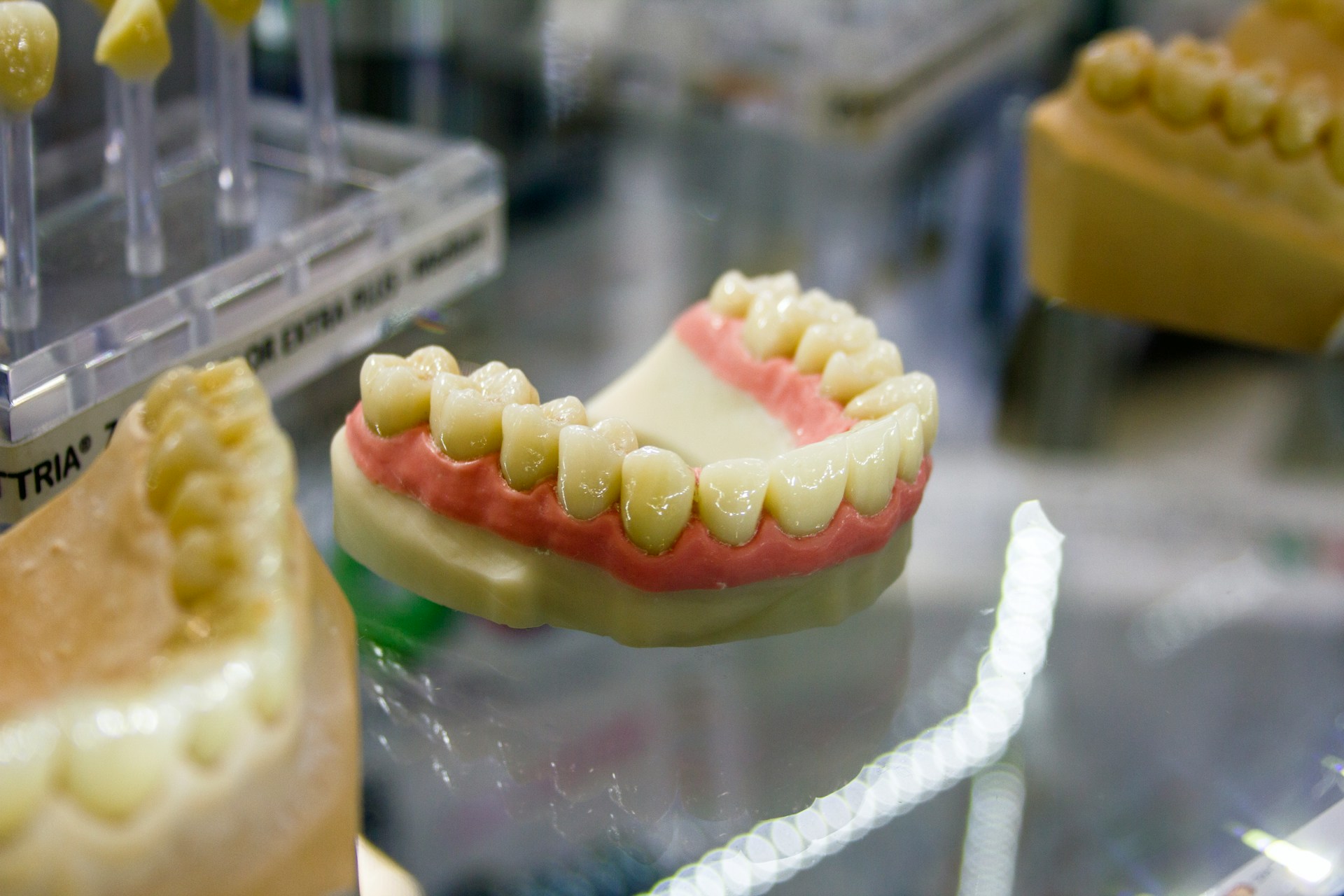Are you contemplating body contouring but feeling uncertain about whether to opt for liposuction or a non-surgical fat reduction method? This comprehensive guide aims to provide you with all the information you need regarding liposuction vs non-surgical fat reduction.
We will explore what liposuction entails, how the procedure works, and who might be an ideal candidate, along with the potential risks and side effects associated with it. Additionally, we will examine non-surgical options, their effectiveness, and the associated recovery times.
By the end of this guide, you will have the insights necessary to make an informed decision about the best approach to achieve your body goals.
What Is Liposuction?

Liposuction is a well-known cosmetic surgery procedure aimed at removing unwanted fat deposits from particular areas of the body. It enhances body contours and can significantly improve one’s body image and self-esteem.
This minimally invasive procedure specifically targets stubborn fat that often does not respond to diet and exercise, making it a preferred choice for individuals looking for noticeable fat loss.
During the procedure, a surgeon employs specialised techniques to carefully suction out excess fat, ensuring that the results meet the patient’s aesthetic goals and expectations.
How Does Liposuction Work?
Liposuction operates by utilising various techniques to precisely target and eliminate fat from specific areas of the body. This procedure employs innovative methods such as ultrasound technology, laser therapy, and cryolipolysis to achieve effective fat removal.
Typically, it involves making small incisions through which a cannula is inserted to suction out the fat, resulting in a sculpted and contoured appearance. The effectiveness of this fat reduction technique has contributed to its widespread popularity among individuals seeking lasting results in body contouring.
Different methods, such as tumescent liposuction and laser-assisted liposuction, can significantly influence the overall experience.
- Tumescent liposuction involves the injection of a solution that includes local anaesthesia, which helps minimise discomfort during the procedure that usually lasts a few hours.
- Conversely, laser-assisted techniques utilise energy to melt fat, potentially leading to shorter recovery times due to reduced trauma.
The choice of anaesthesia can vary from local to general, depending on the technique selected and the extent of the area being treated. Ultimately, the method chosen not only affects the immediate procedure but also plays a crucial role in the healing process and the final results.
Who Is a Good Candidate for Liposuction?

Ideal candidates for liposuction generally include individuals who are in good overall health, maintain a stable body weight, and wish to eliminate localised fat deposits that are resistant to diet and exercise, typically with a body mass index (BMI) within the acceptable range.
It is important for candidates to have realistic expectations regarding the results and a clear understanding of their aesthetic goals, ensuring that the procedure aligns with their vision of body confidence and self-esteem. During the consultation process, it is essential for potential patients to discuss their health conditions and lifestyle openly.
Several factors influence candidacy, including age and overall health status. Younger individuals often experience better healing and tend to have more elastic skin, while those with chronic health issues may face increased risks.
Psychological readiness is equally important; candidates should possess a strong emotional foundation and be prepared for the changes that accompany surgery. Patient reviews often emphasise these aspects—many individuals express gratitude for thorough consultations that addressed their health concerns and body image, which led to more confident decision-making.
Positive testimonials frequently illustrate transformative journeys, showcasing how successful liposuction procedures have enhanced self-esteem and fostered a greater sense of body positivity in their lives.
What Are the Risks and Side Effects of Liposuction?
Liposuction is generally regarded as a safe procedure; however, like any cosmetic surgery, it does come with certain risks and potential side effects that patients should be informed about prior to the operation.
Common side effects may include swelling, bruising, and temporary discomfort. Additionally, there are more serious surgical risks to consider, such as infection or complications related to anaesthesia.
Understanding these risks is essential for managing expectations and ensuring a successful recovery. Typically, recovery involves a well-structured timeline and follow-up appointments to monitor progress.
What Are the Risks of Anesthesia?
Anaesthesia is a vital component in ensuring both comfort and safety for patients undergoing liposuction. However, it is important to recognise that it also carries certain risks, particularly for individuals with specific health conditions or concerns.
Common risks associated with anaesthesia can include allergic reactions, respiratory complications, or cardiovascular issues that may arise during the procedure. Therefore, it is essential for patients to openly discuss their medical history during the consultation process to ensure that the anaesthesia plan is tailored to their unique health considerations.
Regarding the types of anaesthesia typically used in liposuction, there are two primary categories: local anaesthesia and general anaesthesia.
Local anaesthesia targets only the specific area being treated, allowing patients to remain awake yet comfortable throughout the procedure. In contrast, general anaesthesia induces unconsciousness, ensuring that patients feel no pain or discomfort during the process. The choice between these options largely depends on the extent of the liposuction procedure as well as the patient’s personal comfort level.
Regardless of the type of anaesthesia selected, continuous monitoring during recovery is of utmost importance. This vigilance ensures that any adverse reactions can be promptly addressed, which is why having licensed anaesthetists oversee the process is crucial for enhancing both safety and effectiveness.
What Are the Common Side Effects of Liposuction?
After undergoing liposuction, patients may encounter common side effects such as swelling, bruising, and discomfort in the treated areas, which are generally considered a normal part of the recovery process. While these side effects are typically temporary, following post-treatment care guidelines can greatly assist in managing symptoms and enhancing overall satisfaction with the results.
By understanding these side effects, patients can better prepare themselves for their recovery journey.
Plus these symptoms, they might also experience sensitivity in the incision sites and changes in skin texture.
To alleviate discomfort, applying ice packs intermittently can offer significant relief, while wearing a compression garment aids in reducing swelling and supports the healing process. Engaging in incremental movement and gentle stretching is crucial for promoting circulation and minimising stiffness.
It is essential for individuals to prioritise follow-up appointments, as these visits enable healthcare providers to monitor healing progress and address any concerns promptly. This ongoing communication fosters reassurance and plays a vital role in achieving the best possible outcomes after surgery.
What Is Non-Surgical Fat Reduction?

Non-surgical fat reduction encompasses a variety of innovative techniques designed to eliminate stubborn fat without the necessity of invasive surgery. This approach has become increasingly appealing for individuals interested in body contouring and enhancing their overall body image.
Among the most popular methods are:
- cryolipolysis—often referred to as fat freezing
- ultrasound technology
- laser therapy
These techniques specifically target areas of fat, promoting loss while minimising downtime for the patient. As a result, this growing trend of non-invasive options is particularly favoured by those seeking effective fat reduction with reduced recovery time.
How Does Non-Surgical Fat Reduction Work?
Non-surgical fat reduction encompasses various methods designed to target and eliminate fat cells without the necessity for incisions or anaesthesia. It employs advanced technologies, such as ultrasound and energy-based devices, to effectively contour the body.
Treatment options like laser therapy and cryolipolysis operate by freezing or heating fat cells, which leads to their gradual breakdown and subsequent removal through the body’s metabolic processes. This innovative approach presents a safe and effective alternative for individuals seeking fat loss while preserving skin elasticity.
These techniques facilitate precise targeting of specific problem areas, often resulting in a more aesthetically pleasing silhouette. The timeline for these treatments can vary; many individuals may begin to notice visible results within a few weeks, although optimal outcomes are typically achieved after several sessions.
Patients often appreciate the minimal downtime associated with these methods, allowing them to resume their daily routines almost immediately. While some individuals may need maintenance treatments to sustain their results, non-surgical options can yield long-lasting changes when integrated with a healthy lifestyle. This combination makes them a popular choice in the realm of body sculpting.
Who Is a Good Candidate for Non-Surgical Fat Reduction?
Good candidates for non-surgical fat reduction typically include individuals who are close to their ideal weight, have specific areas of targeted fat, and wish to enhance their body contours without resorting to invasive procedures.
These individuals often prefer to avoid the downtime that comes with surgical options and may have health conditions or body types that make them unsuitable for traditional liposuction. It’s essential for individuals to consult with a qualified professional to determine the safest and most effective approach to achieve their aesthetic goals.
Those who lead a generally healthy lifestyle, characterised by a balanced diet and regular physical activity, tend to be better suited for these treatments, as they often experience more effective results.
Personal preferences are also significant; many candidates appreciate the convenience and lower risks associated with non-invasive techniques. Individuals with sensitive skin or those who are prone to complications from anaesthesia might find these methods to be more suitable for their needs.
A comprehensive consultation is crucial, as it allows for the development of a tailored treatment strategy that aligns with each person’s unique body composition and lifestyle.
What Are the Risks and Side Effects of Non-Surgical Fat Reduction?

While non-surgical fat reduction techniques are typically regarded as safe, it is important to recognise that they do come with certain risks and potential side effects that patients should understand before undergoing treatment.
Common side effects may include temporary swelling, redness, and mild discomfort in the treated area. However, depending on the method used, there can also be more serious safety concerns.
Being aware of these risks is crucial for managing expectations and making informed decisions regarding body contouring treatments.
Is There Any Downtime or Recovery Period?
One of the primary benefits of non-surgical fat reduction is the minimal downtime associated with these procedures, allowing patients to resume their daily activities promptly after treatment. Unlike traditional liposuction, which often requires a longer recovery period, non-invasive methods generally involve little to no recovery time.
This makes it much easier for individuals to integrate these treatments into their busy lives. It’s essential for patients to adhere to post-treatment care instructions to optimise their results and manage any minor side effects.
While recovery from non-surgical treatments is typically smooth and straightforward, it is important to recognise that outcomes can vary depending on individual lifestyles and commitment to recommended behavioural changes. Making informed choices regarding nutrition and exercise can significantly improve the effectiveness of these treatments.
In contrast, those opting for more invasive procedures often face extensive recovery protocols, which may include pain management and restrictions on physical activity during the healing process.
Understanding these differences is vital, as it equips individuals to make decisions that align with their expectations and creates a more supportive environment for healing.
What Are the Differences Between Liposuction and Non-Surgical Fat Reduction?
Understanding the differences between liposuction and non-surgical fat reduction is essential for anyone considering body contouring options. Each approach comes with its own unique benefits and considerations that cater to specific needs.
Liposuction is an invasive procedure that offers immediate fat removal and body sculpting, whereas non-surgical fat reduction encompasses a variety of techniques that typically involve less downtime. However, it is important to note that these non-surgical methods may require multiple sessions to achieve the desired results.
Ultimately, the decision between these two options often hinges on personal goals, the amount of fat one wishes to remove, and individual preferences regarding recovery.
1. Invasiveness
The primary distinction in invasiveness between liposuction and non-surgical fat reduction is quite significant. Liposuction employs surgical techniques that necessitate incisions, whereas non-surgical methods are designed to eliminate fat without any invasive procedures. This difference not only influences recovery time but also shapes the overall patient experience.
Typically, those who choose non-surgical options encounter minimal discomfort and can return to their daily activities more quickly. Understanding this distinction is crucial when evaluating the most suitable approach for body contouring.
The decision between these options can have a notable impact on psychological well-being, as patients often contemplate the trade-offs between immediate results and the potential stress that comes with surgical recovery. Many individuals lean towards less invasive alternatives, believing that a gentler approach can help ease anxiety and uncertainty related to the healing process.
By opting for non-surgical fat reduction, patients often find reassurance in the prospect of achieving their aesthetic goals with reduced risks, which enables them in their decision-making.
Ultimately, these preferences underscore a growing trend among patients who advocate for choices that emphasize safety, comfort, and a quicker return to their valued daily routines.
2. Results
In terms of results, liposuction typically offers immediate and substantial fat removal, while non-surgical fat reduction tends to produce gradual improvements over several sessions.
Many patients find that liposuction effectively targets larger fat deposits, resulting in more noticeable body sculpting outcomes. On the other hand, non-surgical methods can effectively reduce fat in smaller, targeted areas, making them an appealing option for those who prefer subtle and natural-looking results.
The timeline for observing the full effects of these procedures can vary. After undergoing liposuction, most patients notice significant changes almost immediately, although the final results may take a few months to become fully apparent as swelling decreases and the skin adjusts.
In contrast, non-surgical fat reduction may take a few weeks to begin showing visible changes, with optimal results often emerging three to six months after treatment.
Both approaches are effective in achieving aesthetic goals: liposuction excels in delivering dramatic transformations, while non-surgical methods offer a gentler enhancement for those looking to refine their appearance without the need for extensive recovery.
3. Cost
Cost plays a crucial role when comparing liposuction to non-surgical fat reduction methods. Typically, the cost of liposuction involves a higher financial commitment due to its surgical nature and the associated clinic accreditation fees.
On the other hand, non-surgical options often appear to be more budget-friendly; however, patients may need multiple sessions, which can accumulate and impact the overall cost. It is vital to understand the financial implications of each approach to make well-informed decisions.
Several factors influence the pricing of these procedures, including the surgeon’s experience, geographical location, and the specific techniques employed. For example, the cost of liposuction can vary significantly depending on how much fat is being removed and the type of anaesthesia used.
Additionally, patients should be aware of consultation fees, which can range from a few hundred to several thousand pounds, ultimately affecting the total budget.
When planning for treatment, it is essential to carefully consider these costs in relation to personal financial resources and long-term goals. This ensures that the selected option aligns with both aesthetic desires and financial realities.
4. Recovery Time
Recovery time can differ quite significantly between liposuction and non-surgical fat reduction. Non-surgical methods often allow for little to no downtime, whilst liposuction typically requires a more extended recovery period due to its invasive nature.
Patients who undergo liposuction may need several weeks to heal completely, whereas those who choose non-surgical treatments can generally return to their normal activities almost immediately. This difference is an important factor for individuals who are trying to balance their aesthetic goals with their lifestyle demands.
For those who opt for liposuction, managing pain is a critical part of the Liposuction recovery process, often necessitating prescribed medications to alleviate discomfort during the initial healing phase. Follow-up appointments are also essential to monitor the healing process and address any potential complications that may arise.
On the other hand, non-surgical fat reduction techniques tend to involve milder sensations, with many patients reporting only slight soreness or swelling. This generally leads to higher satisfaction rates among those who prefer to experience minimal disruption to their daily routines.
Ultimately, the decision between these procedures often depends on how much weight is placed on recovery time and how it aligns with the individual’s personal and professional commitments.
Which Procedure Is Right for You?

Selecting the appropriate method for fat reduction requires thoughtful consideration of personal aesthetic goals, budget limitations, and overall health.
Both liposuction and non-surgical fat reduction offer distinct advantages and are better suited for different body types. It is important for individuals to assess their specific needs and engage in discussions with qualified professionals to explore the best options for achieving their desired results.
By understanding their personal goals and weighing the pros and cons of each procedure, individuals can make an informed decision that aligns with their expectations.
Considerations for Liposuction
When considering liposuction, it is important for potential candidates to reflect on several significant factors, such as their overall health, expected recovery time, and understanding the surgical risks associated with the procedure.
Individuals should carefully evaluate their body mass index and any pre-existing health conditions that may affect their suitability for this fat removal technique. Engaging in a thorough consultation process with a qualified surgeon can provide valuable insights into whether liposuction is the right choice.
Understanding the expected results is essential for managing expectations and contributing to a satisfying outcome. It is also advisable for candidates to explore the various liposuction techniques available, as these can differ in terms of invasiveness and recovery periods.
Candidates should feel encouraged to request before-and-after photographs of previous patients to better gauge potential results. Additionally, being fully aware of post-operative instructions and the importance of adhering to them can significantly impact recovery and overall satisfaction with the procedure.
By carefully considering these factors, individuals can ensure they are making informed decisions about their bodies and well-being.
Considerations for Non-Surgical Fat Reduction
For those contemplating non-surgical fat reduction, several important factors should be taken into account. These include the effectiveness of various treatment options, personal comfort levels with non-invasive procedures, and the timeline for achieving visible results.
It is crucial to assess the amount of targeted fat and to understand how these methods align with individual aesthetic goals. A professional consultation can provide clarity on which non-invasive techniques will best meet one’s needs and lifestyle.
It is also important to be aware of potential side effects associated with these treatments, which may include mild swelling, bruising, or temporary discomfort, depending on the type of technology used. Recognising that multiple sessions may be necessary to achieve optimal outcomes is key to setting realistic expectations.
Therefore, engaging in open discussions with healthcare providers is essential, as they can develop a tailored plan that takes into account one’s unique body composition, lifestyle, and goals, ensuring a personalised approach for the best possible results.
Frequently Asked Questions
What is the difference between liposuction vs non-surgical fat reduction?
Liposuction is a surgical procedure where fat is physically removed from the body using a cannula, while non-surgical fat reduction uses various techniques such as heat, cold, or ultrasound to destroy fat cells without surgery.
Which option is more invasive?
Liposuction is considered a more invasive procedure as it requires incisions and the use of anaesthesia, while non-surgical fat reduction techniques are minimally invasive or non-invasive.
What are the potential risks and side effects of liposuction?
The potential risks and side effects of liposuction include infection, scarring, bruising, swelling, and uneven results. It also carries a risk of complications associated with anaesthesia and the surgical procedure.
Is non-surgical fat reduction a permanent solution?
Non-surgical fat reduction can provide long-term results, but it is not a permanent solution. Fat cells that are destroyed through these techniques will not regenerate, but remaining fat cells can still increase in size with weight gain.
Who is a good candidate for liposuction?
Good candidates for liposuction are individuals who are in good overall health, have a stable weight, and have stubborn areas of fat that are resistant to diet and exercise. It is not recommended for those who are significantly overweight or have certain medical conditions.
Can both liposuction and non-surgical fat reduction be performed at the same time?
Some practitioners may recommend combining liposuction with a non-surgical fat reduction treatment to achieve optimal results. However, this decision should be made after a thorough consultation and evaluation by a qualified professional.












